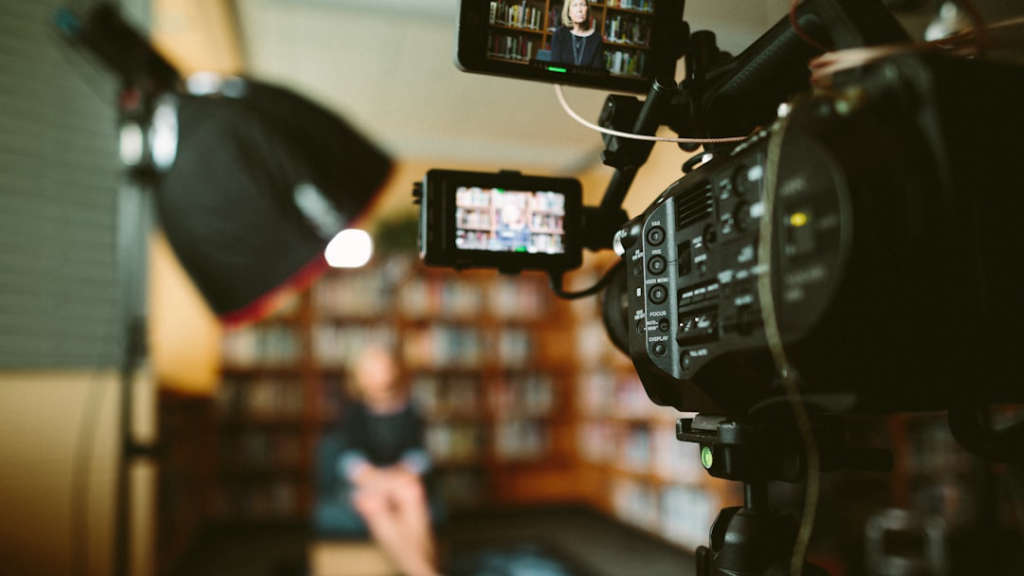Welcome to my blog post titled ‘Exploring Cinema: A Comprehensive Study of Film Techniques.’ In this article, we will delve into the fascinating world of film study, examining various techniques used in movies to create engaging storytelling experiences.
Main Points
- Exploring different aspects of film study
- Analyzing visual storytelling techniques in cinema
- Understanding the importance of film theory
- Investigating the movie industry and its impact on society

Evolution of Cinematography Techniques in Modern Film Industry
In the realm of film study, the evolution of cinematography techniques has been a pivotal focus for researchers and enthusiasts alike. Through cinema research and meticulous movie analysis, it’s evident that the landscape of filmmaking has shifted dramatically over the years.
Key aspects of this evolution include:
- Advancements in camera technology
- Enhanced lighting techniques
- Innovative editing methods
- Usage of special effects
These developments have redefined the way stories are told on screen, sparking creativity and pushing boundaries within the modern film industry.
Analyzing the Impact of Lighting in Creating Cinematic Atmosphere
Lighting plays a crucial role in film theory and cinematic studies, as it significantly contributes to the visual storytelling of a movie. Proper lighting techniques can evoke different emotions and set the tone for a scene, ultimately enhancing the overall cinematic atmosphere.
Effects of Lighting on Cinematic Atmosphere:
| Effect | Description |
|---|---|
| 1. Mood | Lighting can create different moods such as suspense, romance, or horror, depending on the intensity and color temperature. |
| 2. Depth | Proper lighting can add depth to a scene by creating shadows and highlighting certain elements. |
| 3. Atmosphere | Lighting can establish the overall atmosphere of a film, whether it’s a bright and cheerful setting or a dark and ominous environment. |
By understanding the impact of lighting on cinematic atmosphere, filmmakers can effectively use this element to enhance the storytelling experience and captivate audiences.
Exploring the Role of Sound Design in Enhancing the Viewing Experience
Sound design plays a crucial role in enhancing the overall viewing experience of a film. Through meticulous attention to detail and creative manipulation of audio elements, sound designers are able to evoke emotions, create atmosphere, and immerse viewers in the cinematic world. By carefully selecting and mixing sounds, they can enhance the storytelling, engage the audience on a deeper level, and contribute to the overall impact of the film.
Mastering the Art of Editing: Techniques to Create Seamless Transitions
Mastering the art of editing in the film industry is crucial for creating a seamless viewing experience for the audience. By employing various techniques, editors can enhance the flow of a film and maintain the continuity of the story.
Key Techniques for Seamless Transitions
- Match Cut: This technique involves cutting from one shot to another that has a similar composition, color, or movement, creating a smooth transition.
- Cross Dissolve: By gradually blending two shots together, a cross dissolve can signify a change in time, location, or mood.
- Cutaway: A cutaway shot can provide context or reaction to the main action, helping to bridge scenes seamlessly.
By mastering these editing techniques, film editors can elevate the storytelling and captivate the audience with a seamless viewing experience.
Understanding the Influence of Color Grading on Visual Storytelling
In the world of movie studies, the art of color grading plays a crucial role in shaping the visual narrative of a film. By manipulating the colors and tones of a scene, filmmakers can evoke specific emotions, enhance storytelling, and create a unique visual style that sets their work apart.
Through the use of color grading, filmmakers can create a sense of atmosphere, convey a character’s emotions, or even signify a change in the narrative. Whether it’s using warm tones to create a sense of nostalgia or cool tones to establish a futuristic setting, color grading has the power to transform a movie’s visual language and enhance the overall viewing experience.
The Impact of Color Grading on Audience Perception
It’s important for filmmakers to consider the impact of color grading on audience perception. The colors used in a film can influence how viewers interpret a scene, feel connected to characters, and ultimately engage with the story being told. With careful and deliberate color grading, filmmakers can guide the audience’s emotional journey and enhance the storytelling experience.
The Power of Visual Effects: Pushing the Boundaries of Cinematic Imagination
In the world of filmmaking, visual effects have revolutionized the way stories are told on screen. The innovative technology behind these effects allows filmmakers to transport audiences to fantastical worlds and push the boundaries of imagination.
Visual effects have the power to enhance the storytelling experience by creating stunning visuals that were once thought impossible. From breathtaking landscapes to mind-bending creatures, the possibilities are truly endless. As director James Cameron once said:
“The magic of visual effects is that they can take you to places and worlds that you have never seen before, sparking the imagination in ways we never thought possible.”
The Evolution of Visual Effects
| Decade | Milestones |
|---|---|
| 1970s | Introduction of computer-generated imagery |
| 1990s | Rise of digital effects in blockbuster films |
| 2000s | Advancements in motion capture technology |
With each passing year, visual effects continue to evolve and push the boundaries of cinematic storytelling. The creative possibilities are truly endless, allowing filmmakers to bring their wildest dreams to life on the big screen.
Conclusion
In conclusion, ‘Exploring Cinema: A Comprehensive Study of Film Techniques’ is an essential resource for anyone interested in delving deeper into the art of filmmaking. By examining various film techniques, from cinematography to editing, this blog provides valuable insights into the study of film. Whether you are a film buff looking to expand your knowledge or a student aspiring to work in the film industry, this blog offers a comprehensive and informative guide to understanding the intricacies of filmmaking.
Frequently Asked Questions
What are the key elements to consider when analyzing a film?
When analyzing a film, key elements to consider include cinematography, editing, sound, narrative structure, and themes.
How does film reflect and influence society?
Film reflects society by showcasing cultural norms, values, and issues. At the same time, it also has the power to influence society by shaping opinions and sparking conversations.
What are some important film genres and their characteristics?
Popular film genres include comedy, drama, action, horror, and science fiction, each with its own set of characteristics and conventions.

